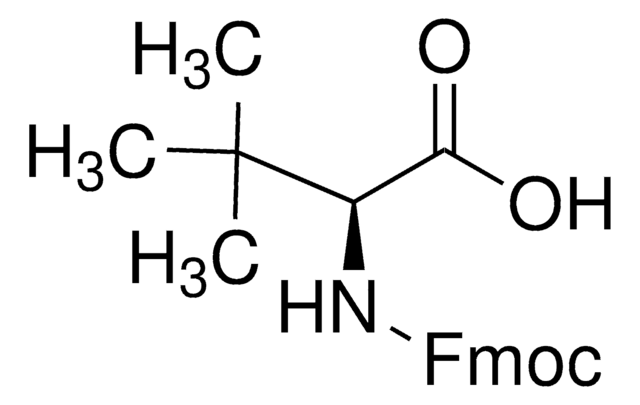47517
Fmoc-Hyp(tBu)-OH
≥98.0% (HPLC)
Synonym(s):
Fmoc-O-tert-butyl-L-hydroxyproline
About This Item
Recommended Products
Quality Level
Assay
≥98.0% (HPLC)
optical activity
[α]20/D −25±2.5°, c = 1% in methanol
reaction suitability
reaction type: Fmoc solid-phase peptide synthesis
application(s)
peptide synthesis
functional group
Fmoc
storage temp.
2-8°C
SMILES string
CC(C)(C)O[C@@H]1C[C@H](N(C1)C(=O)OCC2c3ccccc3-c4ccccc24)C(O)=O
InChI
1S/C24H27NO5/c1-24(2,3)30-15-12-21(22(26)27)25(13-15)23(28)29-14-20-18-10-6-4-8-16(18)17-9-5-7-11-19(17)20/h4-11,15,20-21H,12-14H2,1-3H3,(H,26,27)/t15-,21+/m1/s1
InChI key
WPBXBYOKQUEIDW-VFNWGFHPSA-N
Storage Class Code
11 - Combustible Solids
WGK
WGK 3
Flash Point(F)
Not applicable
Flash Point(C)
Not applicable
Personal Protective Equipment
Choose from one of the most recent versions:
Already Own This Product?
Find documentation for the products that you have recently purchased in the Document Library.
Customers Also Viewed
Articles
Proline analogues are promising candidates for tuning the biological, pharmaceutical, or physicochemical properties of naturally occuring, as well as de novo designed, linear, and, cyclic peptides.
Our team of scientists has experience in all areas of research including Life Science, Material Science, Chemical Synthesis, Chromatography, Analytical and many others.
Contact Technical Service
